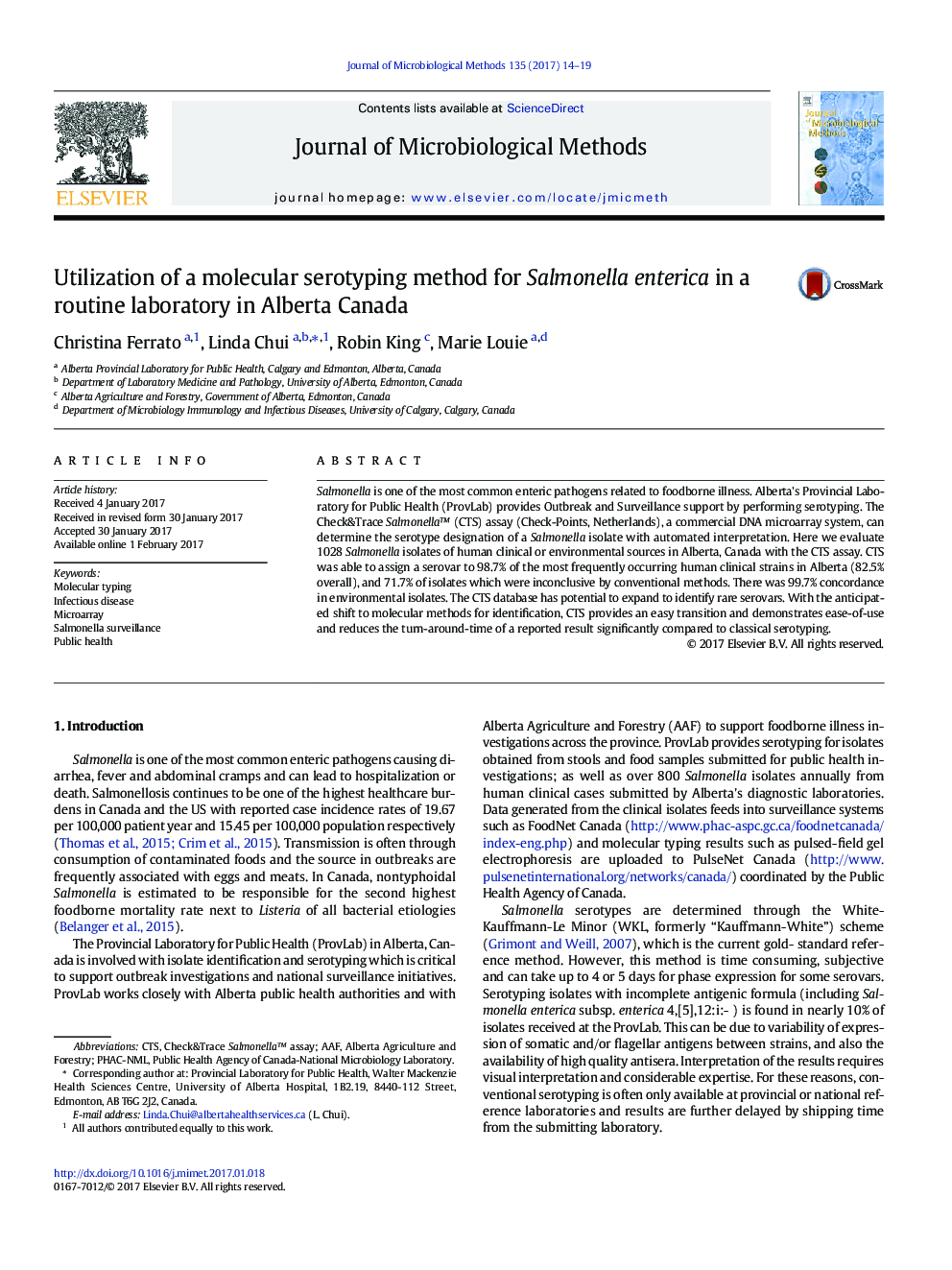| کد مقاله | کد نشریه | سال انتشار | مقاله انگلیسی | نسخه تمام متن |
|---|---|---|---|---|
| 5522251 | 1545908 | 2017 | 6 صفحه PDF | دانلود رایگان |
- A commercial DNA microarray system, Check & Trace Salmonella⢠(Check-Points, Netherlands) was evaluated.
- The assay was able to correctly serotype a high percentage of the most frequent Salmonella strains seen in Alberta.
- Consistency in patterns was seen for infrequent serovars. The growing database can be expanded to identify rare strains.
- This assay integrated easily into our routine algorithm and provided a feasible alternative to Salmonella serotyping for surveillance.
Salmonella is one of the most common enteric pathogens related to foodborne illness. Alberta's Provincial Laboratory for Public Health (ProvLab) provides Outbreak and Surveillance support by performing serotyping. The Check&Trace Salmonella⢠(CTS) assay (Check-Points, Netherlands), a commercial DNA microarray system, can determine the serotype designation of a Salmonella isolate with automated interpretation. Here we evaluate 1028 Salmonella isolates of human clinical or environmental sources in Alberta, Canada with the CTS assay. CTS was able to assign a serovar to 98.7% of the most frequently occurring human clinical strains in Alberta (82.5% overall), and 71.7% of isolates which were inconclusive by conventional methods. There was 99.7% concordance in environmental isolates. The CTS database has potential to expand to identify rare serovars. With the anticipated shift to molecular methods for identification, CTS provides an easy transition and demonstrates ease-of-use and reduces the turn-around-time of a reported result significantly compared to classical serotyping.
Journal: Journal of Microbiological Methods - Volume 135, April 2017, Pages 14-19
